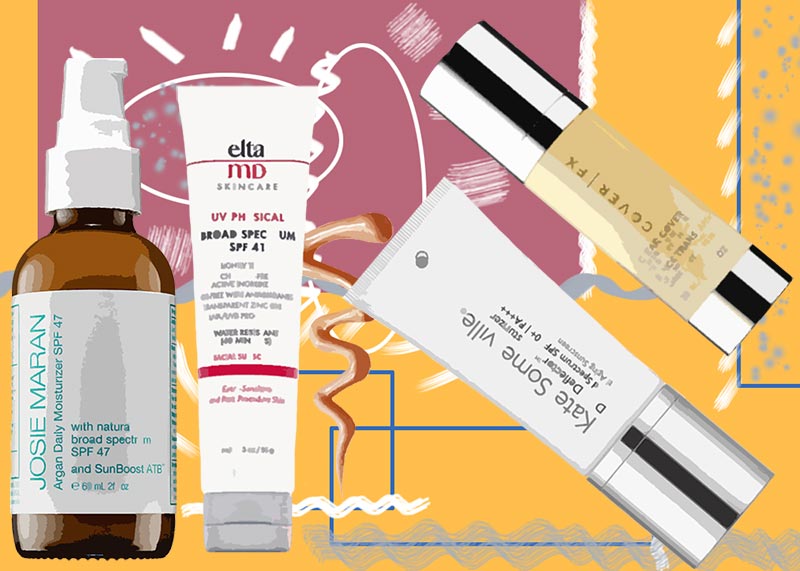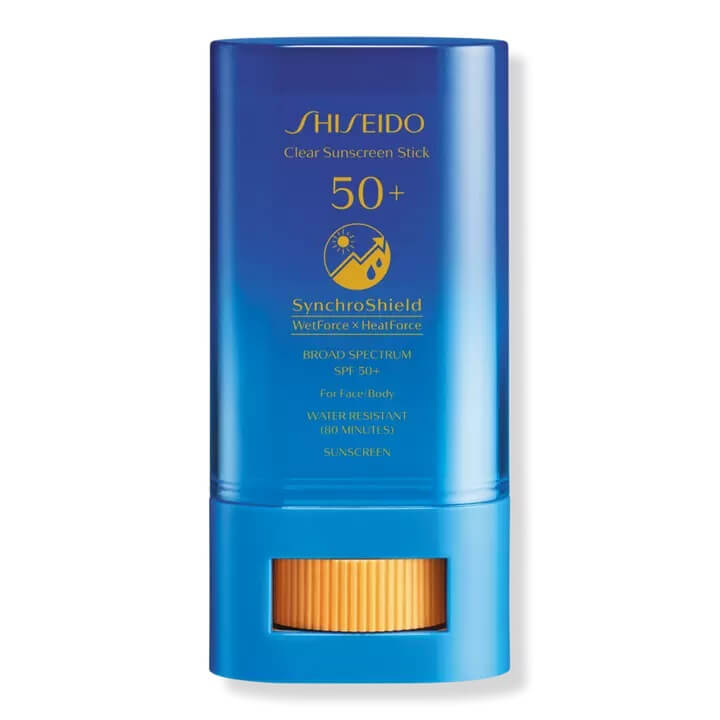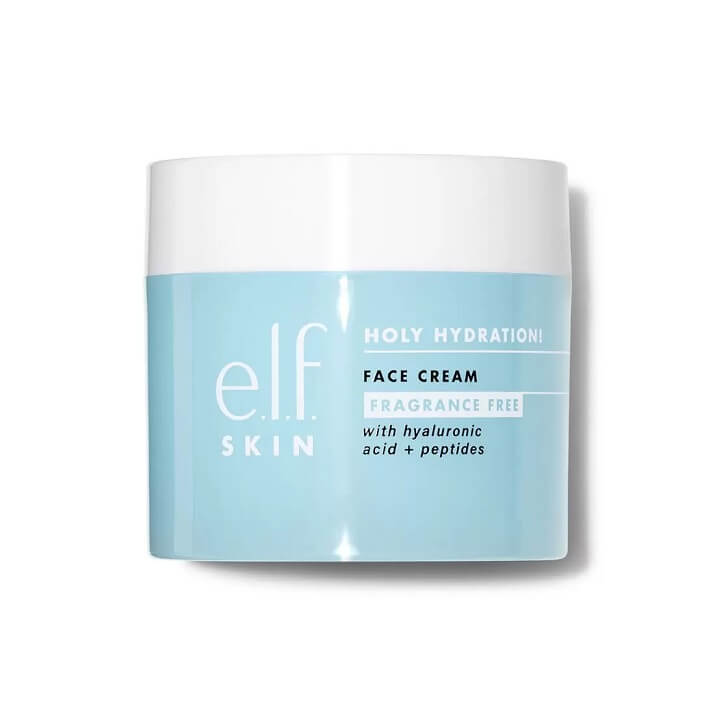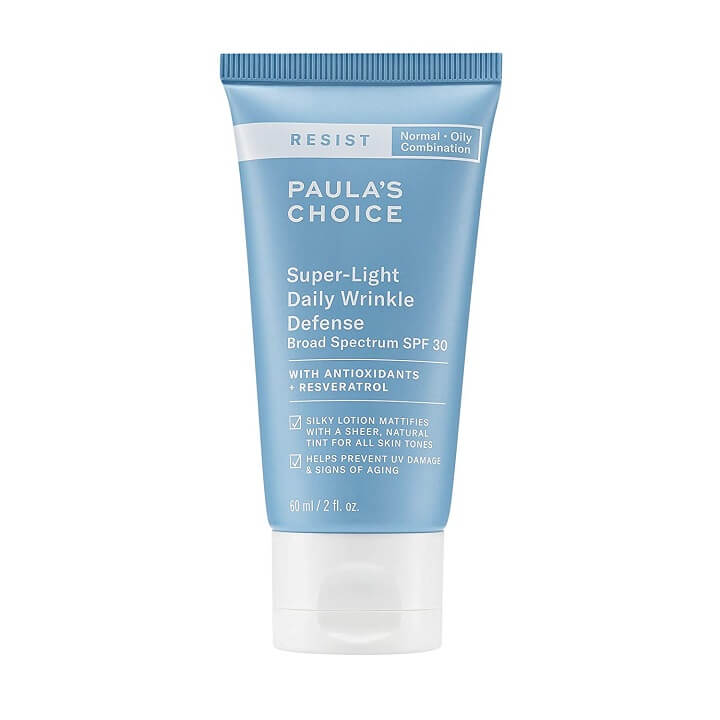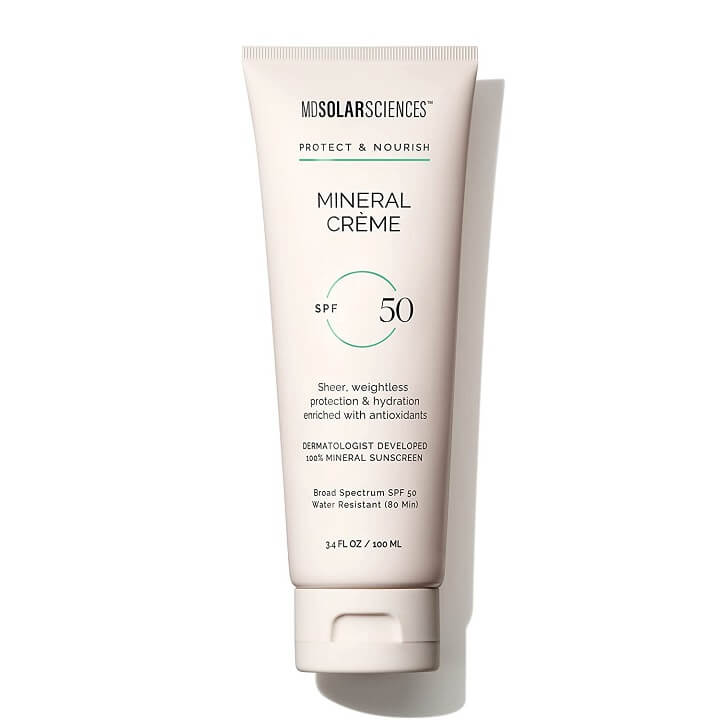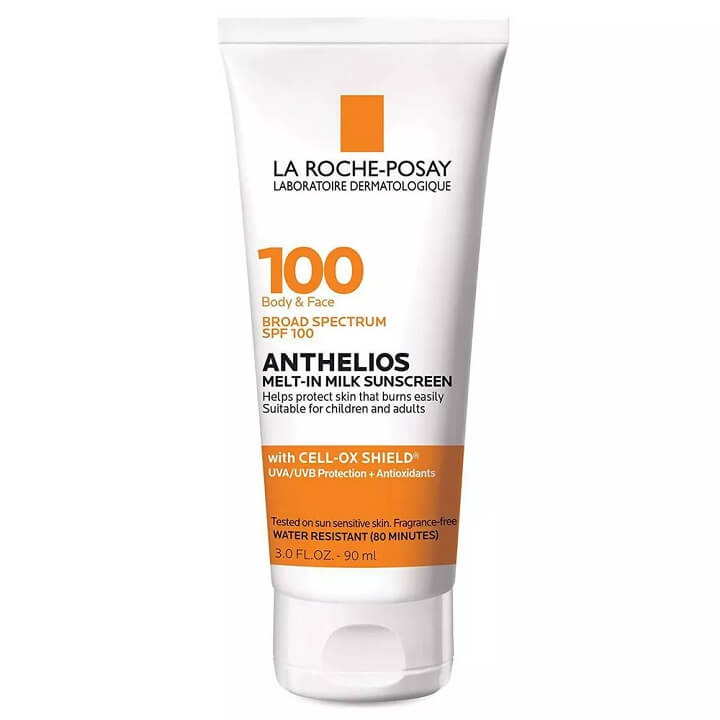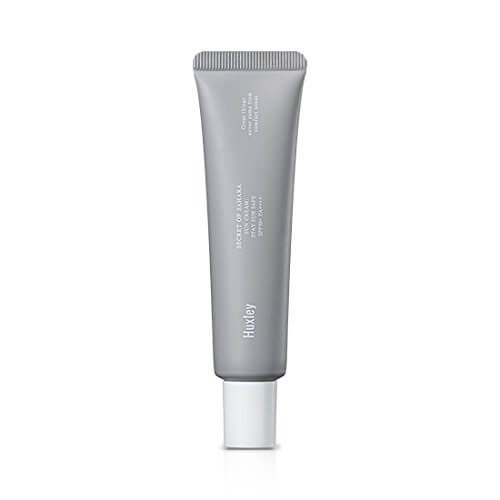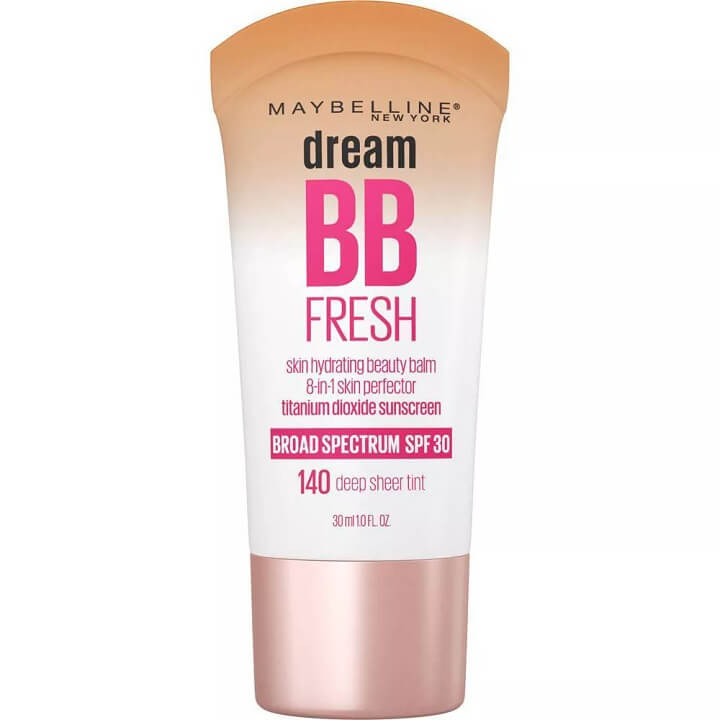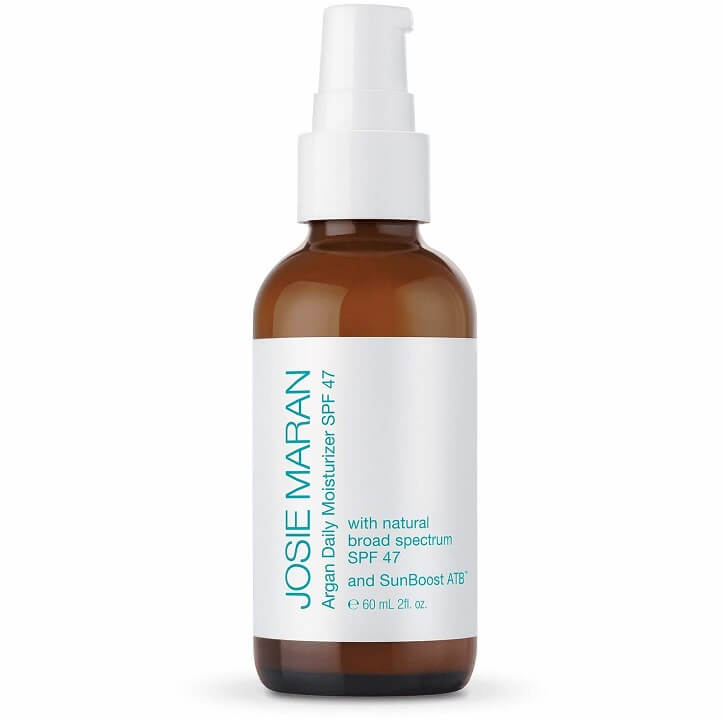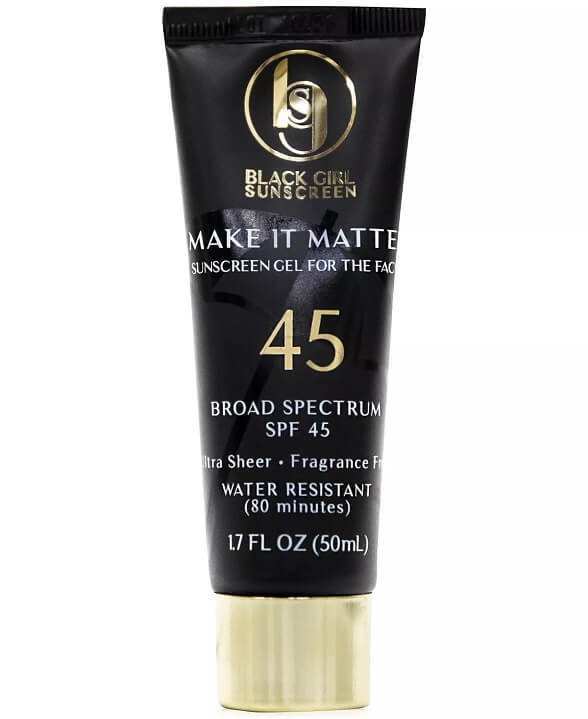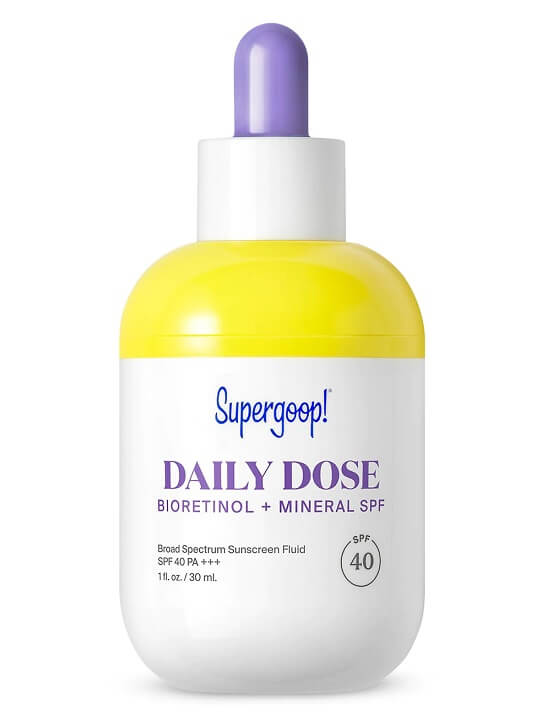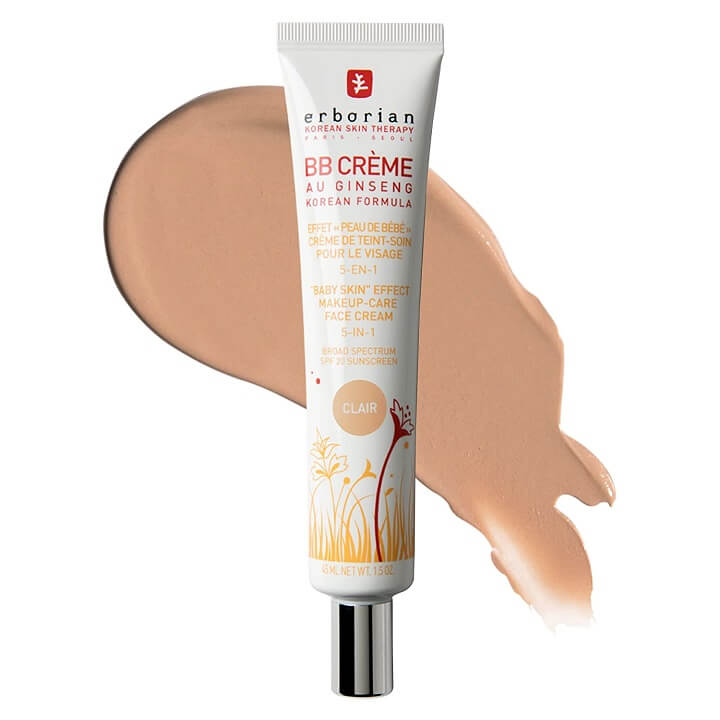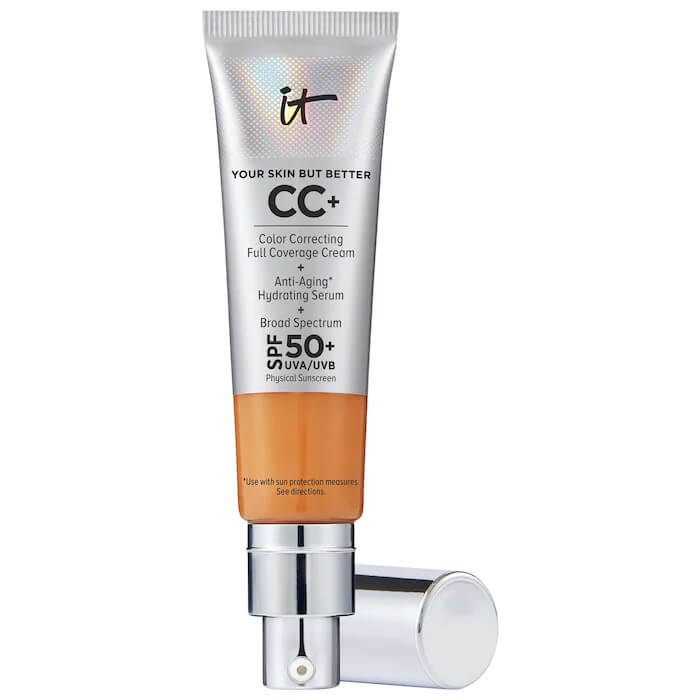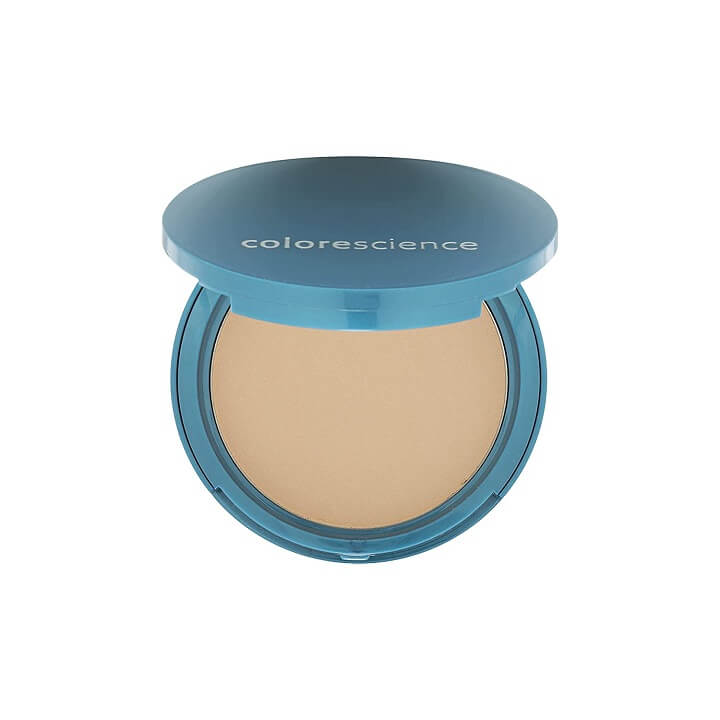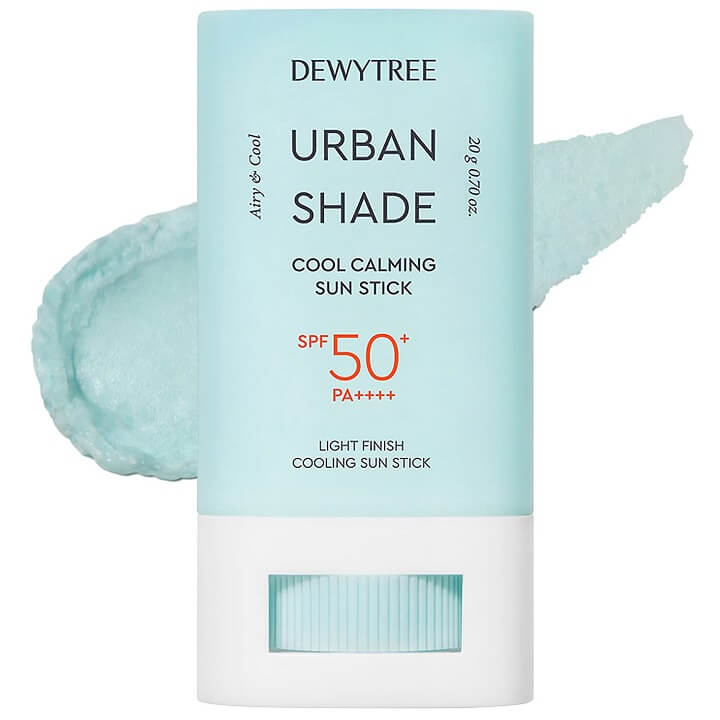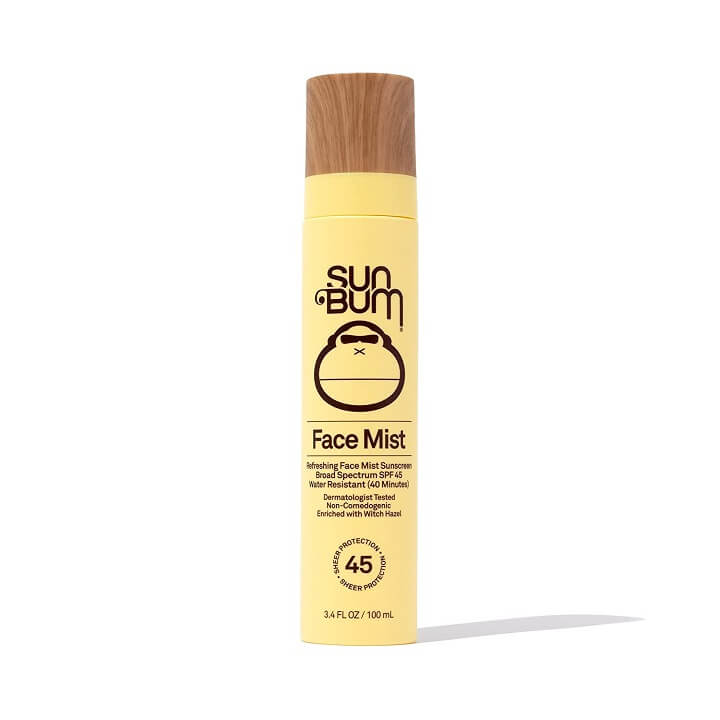Everyone needs sunscreen. We repeat, everyone needs sunscreen — including those with more melanin in their skin. Practicing poor sun protection can do more than give you a nasty sunburn; it can increase your risk of developing melanoma. No matter your skin tone, you should apply a broad-spectrum (meaning coverage for both UVA and UVB rays) sunscreen with at least SPF 30 protection before you head outside.
Understandably, if you also wear makeup or simply don’t like the heavy feel of traditional sunscreens, this can be a tall order. Thankfully, face sunscreens are a thing. These are our top facial sunblock picks to ensure your face is protected from the sun’s harmful rays.
Best face sunscreens overview:
- Best overall: Shiseido Clear Sunscreen Stick SPF 50+
- Best budget: E.l.f. Cosmetics Holy Hydration! Face Cream — SPF 30
- Best anti-aging: Paula’s Choice Super-Light Wrinkle Defense SPF 30
- Best water-resistant: MD Solar Sciences Mineral Crème SPF 50
- Best for sensitive skin: La Roche-Posay Anthelios Melt-in Milk Sunscreen for Face & Body SPF 100
- Best texture: Huxley Sun Essence Stay Sun Safe SPF 50+ PA++++
- Best drugstore makeup: Maybelline Dream Fresh BB Cream
- Best moisturizing: Josie Maran Argan Daily Moisturizer Mineral SPF 47
- Best matte: Black Girl Sunscreen Make It Matte SPF 45
- Best treatment: Supergoop Daily Dose Bioretinol + Mineral SPF 40 Fluid
- Best tint: Erborian BB Cream Velvet Matte Beauty Balm with SPF 20
- Best foundation: IT Cosmetics CC+ Cream Full-Coverage Foundation with SPF 50+
- Best pressed powder: Colorscience Natural Finish Mineral Foundation SPF 20
- Best cooling: Dewytree Urban Shade Cool Calming Sun Stick
- Best mist: Sun Bum Original SPF 45 Sunscreen Face Mist
How we chose the best sunscreens
To compile this list, we researched manufacturer specifications, including SPF, main ingredients, type, consistency, and more, to create a short list of the top face sunscreens. Then, we combed through detailed product descriptions, ratings, and reviews to find the best face sunscreens for each category.
Our picks for the best face sunscreens
Shiseido is a heritage Japanese skincare and color cosmetics brand that’s known for innovative formulations. A common complaint with sunscreen is that it can leave an ashen white caste on people with deeper skin tones. This is one of the main reasons people of color opt not to wear sunscreen.
Shiseido heard that call and answered with the ocean-safe, Clear Sunscreen Stick SPF 50+. Along with broad-spectrum UV protection, this pick is water-resistant for up to 80 minutes. Meanwhile, it’s designed to become even more effective when it comes into contact with water or heat. You can use this sunscreen alone or under or on top of your makeup, thanks to its clear application.
SPF: 50+ | Type: Chemical | Main ingredients: Avobenzone 2.5%, homosalate, 10%, octisalate 5%, octocrylene 10% | Water resistant: Yes | Consistency: Lightweight, stick
SPF doesn’t have to be applied as a separate step. If you want something that’s heavy on the moisture but light on the greasy feel, E.l.f. Cosmetics’ Holy Hydration! Face Cream with SPF 30 is a solid option.
Along with providing the recommended amount of SPF protection, this affordable hydrating face cream is packed with hyaluronic acid and peptides to moisturize further and restore your skin’s natural barrier. This cream also works to even out your skin tone and is safe for all skin types. Better still, it absorbs quickly into the skin and brightens your complexion, thanks to the inclusion of niacinamide.
SPF: 30 | Type: Chemical | Main ingredients: Avobenzone 3%, homosalate, 9%, octisalate 5%, octocrylene 7% | Water resistant: No | Consistency: Cream
A sunscreen that can do more than simply protect your skin from the sun’s rays is an alluring prospect. Paula’s Choice Super-Light Wrinkle Defense SPF 30 is a lightly tinted mineral sunscreen that reduces the look of fine lines and wrinkles.
It also aids in controlling oil production, minimizing redness, and correcting uneven skin tone. It offers a matte finish and protects the skin from environmental stressors, thanks to the inclusion of antioxidants. However, this is a lightly tinted formula with no alternative shades, so it may look ashen on deeper skin tones.
SPF: 30 | Type: Mineral | Main ingredients: Zinc oxide 13%, bisabolol & willow bark extract, antioxidant blend | Water resistant: No | Consistency: Cream
Whether you’re running around on a hot day or plan to spend time in the water, a water-resistant sunscreen formula is a good idea. MD Solar Sciences’ Mineral Crème SPF 50 is designed to give you intensive sun protection that can withstand water exposure for up to 80 minutes.
This vegan formula can work to blur imperfections — serving as an excellent primer. More importantly, it won’t leave an ashen cast on deeper skin tones, and the lightweight formula is safe for people with sensitive skin. This sunscreen also comes in two sizes and leverages antioxidants to protect your skin, like vitamin C to brighten and vitamin E to moisturize.
SPF: 50 | Type: Mineral | Main ingredients: Titanium dioxide 2.1%, zinc oxide 17% | Water resistant: Yes | Consistency: Cream
There’s an argument to be made that once you exceed a certain SPF level, the net benefits are negligible. However, if you feel that higher is better, La Roche-Posay’s Anthelios Melt-in Milk Sunscreen for Face & Body contains SPF 100. It’s specifically designed for people with skin that burns easily after sustained sun exposure.
This pick can be used all over your body and is an oil-free, fragrance-free solution. Along with broad-spectrum protection, this sunscreen is water resistant for up to 80 minutes and is guaranteed not to leave a white cast. It’s suitable for use under makeup and includes an antioxidant complex to protect your skin from the environment.
SPF: 100 | Type: Chemical | Main ingredients: Avobenzone 3%, homosalate 15%, octisalate 5%, octocrylene 10% | Water resistant: Yes | Consistency: Liquid
Historically, sunscreens can be a bit funky and heavy. So, if you’ve avoided wearing it every day because you don’t want to feel greasy or endure a cloying scent, Huxley’s Sun Essence Stay Sun Safe SPF 50+ PA++++ is going to be the answer to your dreams. Along with a light scent, you’ll love that this formula melts into the skin without leaving a dreaded white cast.
We won’t lie; this K-Beauty pick is usually only available online at select retailers within the U.S. But it works wonders as a base before applying makeup. It leaves your skin feeling hydrated rather than greasy thanks to the inclusion of cactus ceramide extracts. The sunscreen also contains niacinamide for brightening properties. However, because it’s an import that hasn’t quite hit physical shelves in American stores, it has a higher price.
SPF: 50 | Type: Unclear but likely chemical | Main ingredients: Bogum cactus stem extract, niacinamide | Water resistant: No | Consistency: Liquid
While using an SPF-infused foundation can be convenient, it can also provide a false sense of security. Experts recommend reapplying sunscreen every two hours, whether indoors or outside. But you might not want to keep reapplying makeup just to maintain sun protection. So, if you plan on wearing sunscreen-infused makeup, consider bringing along a sunscreen mist or clear stick so you can reapply your sun protection throughout the day.
That said, we do like Maybelline’s Dream Fresh BB Cream. While it doesn’t offer a massive shade range, we love that it’s a multitasking product designed to brighten, blur imperfections, smooth, hydrate, and protect. It’s an oil-free formula that’s lightweight and leaves you with a “your skin but better” finish. Plus, it’s easy to find in most drugstores, big box retailers, and even supermarkets.
SPF: 30 | Type: Mineral | Main ingredients: Titanium dioxide 2% | Water resistant: No | Consistency: Liquid
Historically, sunscreens aren’t known for being hydrating. Thankfully, Josie Maran’s Argan Daily Moisturizer Mineral SPF 47 can help banish dry skin because of the inclusion of argan and jojoba oils.
It also offers antioxidant protection from the added green tea, which aids in nourishing and conditioning your skin. This formula is lightweight, with a non-greasy texture that absorbs easily into the skin and improves radiance with continued use.
SPF: 47 | Type: Mineral | Main ingredients: Titanium dioxide 5.1%, zinc oxide 6.4% | Water resistant: No | Consistency: Liquid
You don’t have to be a Black girl to rock this sunscreen. But if you’re concerned about the dreaded white cast, then Black Girl Sunscreen is a brand that can become your go-to for sun protection. The Make It Matte SPF 45 Sunscreen is designed to give you broad-spectrum protection without the usual sheen that traditional sunscreens leave on your skin.
This pick features a gel formula with water-resistant protection for up to 80 minutes. It even supports hydration with moisturizing ingredients like shea butter and coconut oil. It has a vegan formula that works well as a primer under makeup.
SPF: 45 | Type: Chemical | Main ingredients: Avobenzone 3%, homosalate 10%, octisalate 5%, octocrylene 10% | Water resistant: Yes | Consistency: Gel
Supergoop’s sunscreen is a fan favorite for many. So, it’s no surprise that the brand decided to create variations of it. If you’re seeking a sunscreen that can also double as the fountain of youth, the Daily Dose Bioretinol + Mineral SPF 40 Fluid is a great option. Along with broad-spectrum sun protection, you’ll benefit from bakuchiol — a vegan alternative to retinol — to aid in cellular turnover.
If you find that retinol is too harsh, bakuchiol is a gentler alternative. Although some might think that an SPF-infused bakuchiol skin product might be aggressive, it ensures that you apply the skin-rejuvenating ingredient with a healthy dose of sunscreen to protect your delicate skin.
SPF: 40 | Type: Mineral | Main ingredients: Bakuchiol 1%, L-carnosine, olive esters & glycerine, grape seed extract complex, green tea extract & English oak bark extract, zinc oxide 16.5% | Water resistant: No | Consistency: Liquid
Erborian is another K-Beauty brand with innovative products, but this one is easier to find in the United States. The brand’s BB Cream Velvet Matte Beauty Balm is a great way to kick off your sun protection. However, it only offers SPF 20, which is 10 below the recommended amount for outdoor use. Similarly, for full protection throughout the day, you need to reapply. If you don’t intend to keep reapplying the BB cream, bring a sunscreen stick or mist with you.
Still, we do like that this SPF-infused BB cream comes in a breathable, lightweight, and buildable formula. It offers moisture and even comes with ginseng to firm the skin, as well as licorice and ginger for anti-inflammatory protection. Do note that only four colors are available, so many folks across the shade range might find this makeup limiting.
SPF: 20 | Type: Mineral | Main ingredients: Zinc oxide, titanium dioxide | Water resistant: No | Consistency: Liquid
If you’re going to use makeup to incorporate sun care, then it makes sense to pick a product that offers a higher SPF. IT Cosmetics has some of the highest SPF found in a foundation or CC cream — the brand’s CC+ Cream Full-Coverage Foundation has an SPF of 50. More importantly, IT has long since expanded the shade range from just a handful to 22, including a more comprehensive assortment for deeper skin tones.
Along with broad-spectrum SPF, you’ll get a foundation designed to color correct, hydrate, and boost anti-aging effects, thanks to ingredients like hyaluronic acid, niacinamide, and vitamin E. The full-coverage cream hides imperfections and evens skin tone. Still, you should bring a sunscreen mist or stick with you if you plan on spending time outdoors so you can reapply as needed.
SPF: 50 | Type: Chemical | Main ingredients: Homosalate 10%, octisalate 5%, octocrylene 4% | Water resistant: No | Consistency: Cream
Colorscience is another brand that focuses on makeup that’ll help your skin look better. The Natural Finish Mineral Foundation SPF 20 is a great pick if you prefer pressed powders. While this pressed powder offers up to 80 minutes of water resistance, the shade range is a bit limited, and the SPF doesn’t meet recommended guidelines for the outdoors.
It’s designed to apply lightweight and hydrate your skin to reveal a smoother, more radiant complexion. Vitamin E aids in providing antioxidants, while the vegetal extract complex creates a natural barrier to retain moisture. Finally, carrot seed oil, another antioxidant, aids in smoothing and softening the skin.
SPF: 20 | Type: Mineral | Main ingredients: Titanium dioxide 21.2%, zinc oxide 12.1% | Water resistant: Yes | Consistency: Pressed powder
On those hot days when your skin could use a little refreshment, Dewytree’s Urban Shade Cool Calming Sun Stick with SPF 50+ PA++++ is exactly what it needs. The lightweight stick goes on clear, making it great for all skin tones. Plus, the compact design means you have no excuse for not bringing sun protection with you.
This vegan and reef-friendly sunscreen has nourishing ingredients like kelp and aloe extract packed into a moisturizing formula that doesn’t leave your skin feeling greasy. Just note that this is a K-Beauty pick that’s currently only available at select online retailers. For a truly cooling effect, put this stick in the fridge or a mini cooler with the rest of your beauty products.
SPF: 50 | Type: Chemical | Main ingredients: Aloe barbadensis leaf extract, dioscorea Japonica root extract, Laminaria Japonica extract, panthenol (vitamin B5) | Water resistant: No | Consistency: Liquid
For those who just want to get up and out the door, you want a travel-friendly sunscreen that’s easy to apply. You can’t go wrong with Sun Bum’s Original SPF 45 Sunscreen Face Mist.
The product is a lightweight spray that goes on sheer but offers significant sun protection. A gluten-free, vegan, cruelty-free, and reef-friendly pick, this Sun Bum mist offers up to 40 minutes of water resistance.
SPF: 45 | Type: Chemical | Main ingredients: Homosalate 15%, octocrylene 7%, octisalate 5%, avobenzone 3% | Water resistant: Yes | Consistency: Liquid, spray
Sun protection for everyone
Choosing to go outdoors without SPF is a risk that no one should take. There’s no excuse for exposing your delicate skin to harsh UVA and UVB rays. If you want to be confident that your sunscreen goes on clear and that you can reapply easily throughout the day, Shiseido’s Clear Sunscreen Stick SPF 50+ is a solid option. But if you’re working on a budget, E.l.f. Cosmetics’ Holy Hydration! Face Cream with SPF 30 is a good starting point.
How to pick the right face sunscreen for you
Finding the right sunscreen doesn’t have to be complicated, but you do need to consider a few factors, such as the main ingredients, SPF, skin type, and whether it leaves a white cast.
Main ingredients
Sunscreen tends to fall into two main categories — chemical and mineral. Sometimes these are referred to as organic (chemical) and inorganic (mineral). Mineral sunscreens only include one or both of two naturally occurring ingredients: zinc oxide and titanium dioxide. Meanwhile, chemical sunscreens may use a more comprehensive array of ingredients. Some of the most common that you’ll find in many of our picks include avobenzone, homosalate, octocrylene, and octisalate.
While both work equally well at providing broad-spectrum protection against both UVA and UVB rays, mineral sunscreens are the ones most likely to give you that dreaded white cast. This might not be an issue if you’re very fair-skinned. But it can be an issue for those with medium to deep complexions. Chemical sunscreens tend to be better at preventing white casts, making sun protection accessible to a wider range of people.
SPF
When shopping for sunscreen, there are two key factors to consider: the SPF level and if it provides broad spectrum protection. Broad spectrum simply means that a sunscreen can protect against both UVA and UVB — the two types of ultraviolet, skin-damaging rays that the sun emits. UVB rays cause sunburns, and UVA rays lead to premature aging.
Broad-spectrum protection is only effective if the SPF level is high enough. If you’re primarily spending time indoors, SPF 15 is more than sufficient. But if you’re heading outdoors, experts agree that SPF 30 is the minimum you should consider for proper protection. Either way, for best results, you should reapply every two hours.
SPF-infused makeup
These days, SPF-infused makeup is the norm — particularly for foundations. This can be convenient if you feel that applying sunscreen as a separate step takes too long for your daily routine. But opting for SPF-infused makeup can also lead to a false sense of security.
Keep in mind that dermatologists and skin cancer experts recommend reapplying sunscreen every two hours. Additionally, people are encouraged to wear about a quarter of a teaspoon of protection on just their faces. For most people, this is a lot of foundation to wear — meaning that you’re usually not applying enough makeup to provide adequate coverage. So, if you do opt for a foundation with SPF, bring along a sunscreen mist or stick so you can reapply throughout the day as needed.
Skin type
As with moisturizers, you want a sunscreen that works with your skin rather than against it. If you have oily skin, look for oil-free options with a thinner liquid texture or even a gel. Those with dry skin will want lotion or cream-based sunscreens. Even sticks can be ideal because they work like balms.
If you’re concerned about the white cast because you have a deeper skin tone, avoid mineral sunscreens. Meanwhile, if you have sensitive skin, consider the ingredients. Specifically, the chemical ingredient avobenzone has been linked to burning and stinging sensations. Individuals with acne-prone skin might want to avoid heavier sunscreens, as the greasy texture can encourage breakouts.
FAQ
What SPF do dermatologists recommend for the face?
This depends on whether you’ll be indoors or outside. If you’re primarily indoors, you can opt for a product with SPF 15. For extended time outdoors, look for at least SPF 30. Whichever you choose, remember that you need to reapply every two hours for sustained sun protection.
What’s the healthiest sunscreen for your face?
This is going to depend on your skin type and any other concerns you have. Your sunscreen should have a texture that doesn’t aggravate any underlying conditions such as acne or skin sensitivities.
What sunscreen can I put on my face everyday?
In theory, you can put any sunscreen on your face every day. It’s just a matter of finding a sunscreen with the right texture that’s still effective at providing sun protection. We recommend the Shiseido Clear Sunscreen Stick SPF 50+ because it’s suited for all skin tones and is in an easy-to-use formula.

